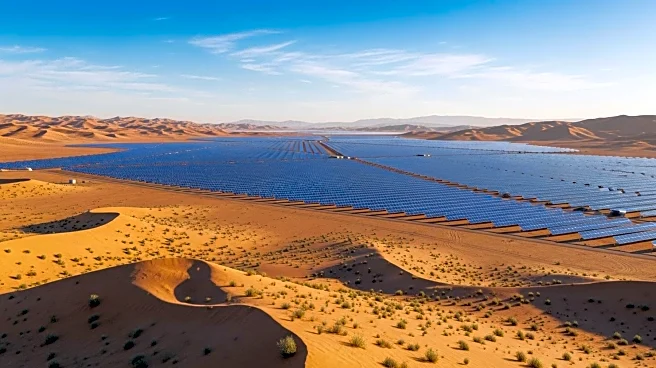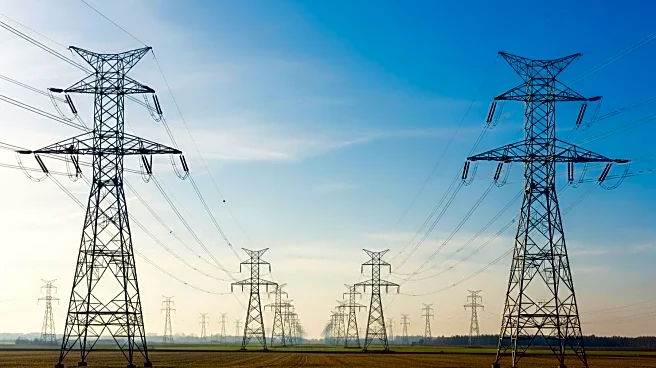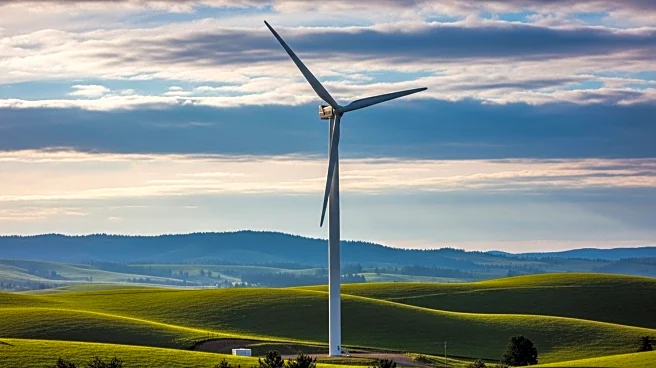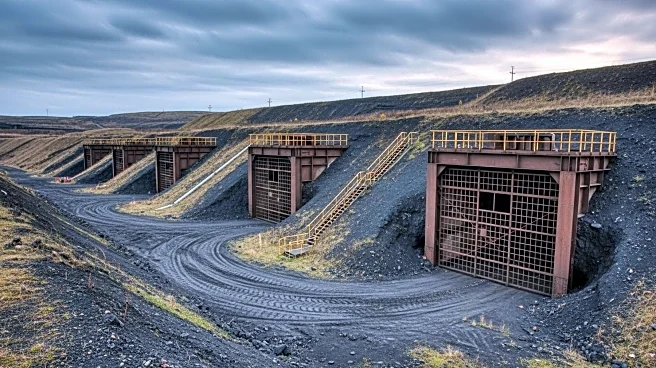What's Happening?
Recent research from China has revealed that large-scale solar panel projects in desert regions are not only contributing to clean energy production but are also causing significant ecological changes. The study, focusing on the Gonghe Photovoltaic Park in the Talatan Desert, found that the areas beneath the solar panels experience cooler temperatures, increased moisture retention, and a resurgence of plant and microbial life. These findings suggest that solar farms can create microclimates that may aid in the restoration of arid landscapes. The research utilized a comprehensive 57-indicator DPSIR model to assess ecological impacts, showing higher ecological scores in areas with solar panels compared to those without. This development highlights the potential for renewable energy infrastructure to offer environmental benefits beyond energy generation.
Why It's Important?
The implications of these findings are significant for the future of renewable energy and environmental conservation. As the world seeks sustainable solutions to combat climate change, the dual role of solar farms in energy production and ecological restoration presents a promising avenue. This could lead to a reevaluation of how solar projects are designed and implemented, emphasizing the importance of thoughtful planning to maximize environmental benefits. The potential for solar farms to contribute to land restoration could influence policy decisions and investment strategies, encouraging the integration of ecological considerations into renewable energy projects. This development may also inspire further research into the environmental impacts of other renewable energy technologies.
What's Next?
The next steps involve continued monitoring and research to understand the long-term ecological impacts of solar farms in desert regions. Developers may experiment with design modifications, such as adjusting panel spacing and tilt, to enhance ecological benefits. Policymakers and environmental groups will likely scrutinize these findings to inform future regulations and guidelines for renewable energy projects. The success of these initiatives could lead to broader adoption of similar strategies in other arid regions worldwide, potentially transforming how renewable energy infrastructure is perceived and utilized.
Beyond the Headlines
This development raises important questions about the balance between energy production and environmental stewardship. While the potential ecological benefits are promising, the variability in desert ecosystems means that not all solar projects will have the same impact. The challenge lies in ensuring that these projects are designed and managed to maximize positive outcomes while minimizing any negative effects. This situation underscores the need for interdisciplinary collaboration between engineers, ecologists, and policymakers to create sustainable solutions that address both energy and environmental challenges.










